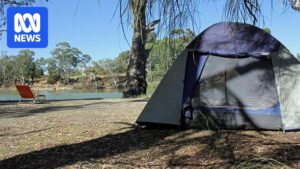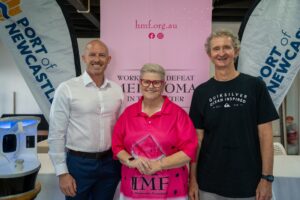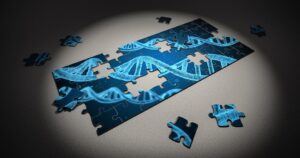
SAN FRANCISCO, California, USA, 8 July 2025 – In a remarkable interview published in Brain Medicine, Dr. Michael C. Oldham shares his transformative journey from advertising executive to pioneering computational neuroscientist. His innovative use of gene coexpression analysis has provided groundbreaking insights into the human brain’s cellular and molecular architecture, with significant implications for understanding and treating gliomas.
Dr. Oldham’s unconventional path to neuroscience began after he graduated from Duke University at just 20 years old. Despite a pre-med focus, he chose not to pursue medical school, instead diving into the fast-paced world of San Francisco’s advertising industry during the dot-com boom. His fascination with the evolution of human language and what sets human brains apart from those of primates eventually drew him back to academia.
From Madison Avenue to Molecular Neuroscience
“The genetic changes that gave rise to the modern human brain were the catalyst for life as we know it,” Dr. Oldham reflects. This profound question led him to pursue a PhD at UCLA, where his discoveries have since become foundational in neuroscience research.
Collaborating with Dr. Dan Geschwind and biostatistician Dr. Steve Horvath, Dr. Oldham performed the first genome-wide analysis of transcriptional covariation in the human brain. His breakthrough came with the realization that patterns of gene activity in brain samples corresponded to transcriptional signatures of different cell types.
“Variation in the cellular composition of bulk tissue samples should inevitably drive the covariation of markers for different cell types,” Dr. Oldham explains.
This insight, published in Nature Neuroscience in 2008, demonstrated how gene coexpression analysis could identify optimal markers of cell types and states. This approach, known as Weighted Gene Coexpression Network Analysis (WGCNA), has since become a cornerstone technique in genomics research.
Pioneering Gene Coexpression Network Analysis
Unlike traditional differential expression analysis, which compares individual genes between cohorts, WGCNA identifies robust patterns of coordinated gene activity within biological systems. This methodology has proven particularly powerful for understanding complex tissues like the brain, where multiple cell types interact intricately.
Dr. Oldham’s early research focused on analyzing gene activity patterns in the brains of humans and other species. These efforts identified significant gene expression changes in human radial glia, interneurons, and astrocytes, introducing novel methods for aggregating and comparing gene activity patterns among biological systems.
From Brain Evolution to Brain Tumors
More recently, Dr. Oldham’s research has shifted towards addressing one of medicine’s most challenging diseases: malignant gliomas. As a faculty member at UCSF’s Department of Neurological Surgery and Brain Tumor Center, he applies his computational approaches to these heterogeneous brain tumors.
His team has analyzed gene activity patterns from over 17,000 human brain samples, including approximately 10,000 normal and 7,000 malignant glioma samples. This massive undertaking led to the development of OMICON, a platform designed to make these complex datasets accessible to the broader research community.
The resource contains over 100,000 gene coexpression modules extensively characterized via enrichment analysis with thousands of curated gene sets.
By comparing gene activity patterns between normal human brains and malignant gliomas, Dr. Oldham and his team are identifying reproducible molecular changes in specific cell types of the glioma microenvironment. These molecular signatures offer opportunities for developing novel biomarkers and targeted treatment strategies for glioma patients.
Confronting the Reproducibility Crisis
Beyond his primary research, Dr. Oldham is increasingly concerned with what he describes as science’s reproducibility crisis. “If most of the findings we toil to produce cannot feasibly be reproduced, what is the point?” he asks, highlighting a challenge that extends far beyond neuroscience.
In response, he has taken leadership roles to address these systemic issues. As Vice Chair of UCSF’s Academic Senate Committee on Library and Scholarly Communication, he launched a pan-UCSF Task Force on research data and metadata standardization.
“By standardizing how we package and describe our research data, we can accelerate data discovery and analysis, including the use of artificial intelligence,” Dr. Oldham notes.
He emphasizes that standardized data packages with persistent identifiers can serve as building blocks for new technology infrastructure to modernize scholarly communication around reproducible data analysis.
The Human Side of Scientific Discovery
The interview also reveals personal insights that shaped Dr. Oldham’s career trajectory. His decision to spend two additional years in graduate school after his first major publication resulted in a second, even more impactful paper that secured his selection as a UCSF Sandler Faculty Fellow.
When not advancing neuroscience, Dr. Oldham can be found on the trails of Marin County, often walking alone and lost in thought. He maintains close friendships from his San Francisco advertising days, adhering to their motto: “ABC (always be celebrating!).”
Looking ahead, Dr. Oldham sees the integration of multiscale and multimodal data as crucial for understanding brain complexity. He advocates for standardized data production strategies that leverage robotic automation to generate reproducible datasets at scale.
“There is a big difference between describing what you think a dataset means versus predicting what you will see in the next dataset,” he says.
Dr. Michael C. Oldham’s Genomic Press interview is part of a larger series called Innovators & Ideas that highlights the people behind today’s most influential scientific breakthroughs. Each interview offers a blend of cutting-edge research and personal reflections, providing readers with a comprehensive view of the scientists shaping the future.
The Genomic Press Interview in Brain Medicine titled “Michael C. Oldham: Clarifying the cellular and molecular architecture of the human brain in health and disease through gene coexpression analysis,” is freely available via Open Access on 8 July 2025 in Brain Medicine.






